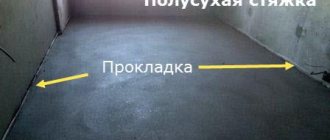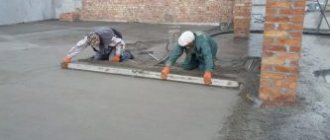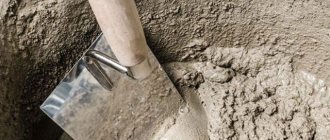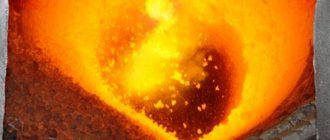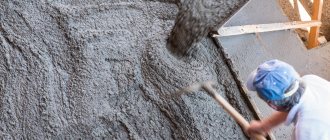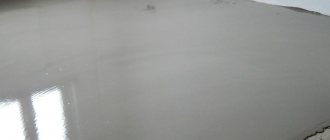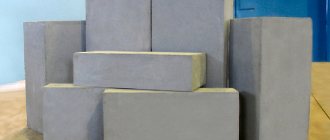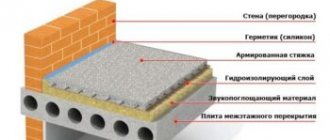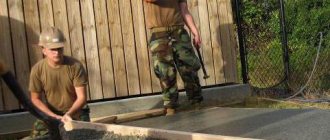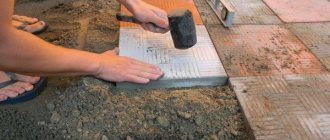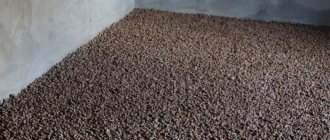Dry plaster mix M100 in big bags (MKR).
Dry mix M100 plastering in big bags (MKR - soft containers made of polypropylene fabric (two or four slings) with standardized seat dimensions (90x90 cm) and bulk weight of the dry mix up to 1.5 tons) is aimed at developers, construction contractors and large profile and general construction teams optimizing supply and warehouse logistics processes to reduce non-production costs when implementing construction projects.
Dry plaster mixture M100 in big bags (MKR) can be shipped by road, in covered railway cars, as well as in bulk (in bulk) by cement tankers or sand trucks and hopper cars by rail. Dry mix M100 plastering in big bags (MKR) or in bulk is more economically profitable than dry mixes in 50 kg bags, since the manufacturer's costs for packaging/packing, bags, pallets are excluded from the selling (consumer) price, wholesale discounts apply, and the buyer - the construction contractor - optimizes the costs of unloading/warehousing/storage and does not dispose of containers.
Use of dry plaster mixture M100 in big bags (MBR).
Dry plaster mixture M100 in big bags (MKR) is used for plastering work indoors and outdoors - spraying and leveling surfaces, and also in most situations due to the small size of the filler (up to 0.63 mm) - as finishing coatings on ceilings and walls , including when plastering facades.
Thanks to the optimized composition of the dry plaster mixture in big bags (MBR), modifying additives and limiting the maximum filler size (0.63 mm), it was possible to obtain a construction product with unique technical and technological characteristics, which allows:
— apply a layer of coating up to 20 mm thick in one sweep;
- use both manual and mechanized coating methods using mortar pumps or plastering stations.
Important: The mobility of the mortar mixture, guaranteed by the manufacturer, is 10-12 cm when testing the immersion depth of the cone according to the GOST 5802-86 method (as amended on January 19, 2011), which, in fact, corresponds to the mobility grades of both Pk3 and Pk4 - optimal mobility for mechanized applying plaster coatings in accordance with the provisions of GOST 28013-98 (as amended on April 19, 2010).
Thermal conductivity of semi-dry machine screed when installing water heated floors
Reproduction of articles, as well as their individual parts, is prohibited. We want to reserve the right to exclusive placement of this material on our website home-engineering.net. Here we share the knowledge and experience gained by our team over the years of work in the field of design and installation of engineering systems.
To the list of articles
Introduction Factual data on the thermal conductivity of traditional concrete, cement-sand and semi-dry floor screeds What do these figures tell us? How much will it be necessary to increase the water temperature in underfloor heating pipes when using different types of screeds? What does it mean? conclusions
Introduction to top
Semi-dry machine floor screed has firmly taken its position in individual (cottages) and mass (multi-story buildings) construction. It has a lot of advantages: speed of installation, almost perfectly flat surface, minimal risk of cracks, etc. But, like everything in this world, it also has disadvantages compared to traditional concrete or wet floor screed: reduced density and strength. The lower density compared to heavy concrete and traditional cement-sand mortar also means lower thermal conductivity. Thinking and deep-digging people quite logically raise questions related specifically to the thermal conductivity of the screed in which the heated floor pipes will be located:
- Is semi-dry screed suitable for water-heated floors?
- What is the exact thermal conductivity value of a semi-dry machine-made floor screed?
- How does it differ from the thermal conductivity of a traditional screed?
- Will this negatively affect the operation of underfloor heating?
- Will this lead to increased operating costs for the building? and so on.
We will try to answer these and some other questions in this article.
Actual data on the thermal conductivity of traditional concrete, cement-sand and semi-dry floor screeds to the top
Let's start with the exact numbers. According to data from SNB 2-04-01-97 Construction heating engineering:
- The thermal conductivity coefficient of concrete with a density of 2400 kg/m³ on gravel or crushed stone from natural stone is about 1.5..1.8 W/mK;
- The thermal conductivity coefficient of cement-sand mortar with a density of 1800 kg/m³ is about 0.6..0.9 W/mK.
Of course, you need to understand that these figures very much depend on the quality of preparation and laying of the mixture, its humidity, etc., but they give us a very good guide.
As for the thermal conductivity of the semi-dry solution, there is no such data in this SNB, because no one knows military secrets and no one needs it. However, there is an interesting document: “Study of the thermal conductivity of semi-dry unbound cement-sand screed. Technical conclusion". This study was carried out at the Institute and has many signatures, and even a seal with a head of cabbage with an eagle. According to the results of this study, the thermal conductivity (λ - lambda, thermal conductivity coefficient) of semi-dry screed samples with a density of about 1500 kg/m³ is about 0.4 W/mK.
Table with test results for semi-dry screed samples.
Thus, using methods of manipulating the mass consciousness of rounding, for convenience we will assume that:
- The thermal conductivity (coefficient) of concrete screed is 1.6 W/mK;
- The thermal conductivity of a cement-sand mortar screed is 0.8 W/mK;
- The thermal conductivity of semi-dry screed is 0.4 W/mK.
What do these numbers tell us? up
A slightly well-read and suspicious person will immediately say: “HERE! This is where we get screwed! What a loss and damage this is...” And he will be right only in that, indeed, the thermal conductivity of a semi-dry machine floor screed is 2 times less than the thermal conductivity of a conventional screed and as much as 4 times less than a concrete one. But what does this mean in practice? And this is a little more complicated than simply dividing 8 or even 16 by 4.
From this example it follows that the thermal conductivity coefficient of a wall fragment made of ceramic hollow bricks is 0.67 W/mK.
The thermal conductivity coefficient of a material (λ, W/mK) is numerically equal to the heat flux in watts, which, passing through a layer of this material 1 meter thick, causes a temperature drop at this distance (1 meter) of 1 degree Kelvin. That is, the greater the thermal conductivity of a material, the greater the heat flux a layer of this material can pass through itself at a given temperature difference at its boundaries.
Now let's return to our specific case with the screed. The lower the thermal conductivity coefficient of the screed, the greater the temperature difference required between the heating pipes (the average temperature in the supply and return of the heated floor) and the temperature of the floor surface to transfer the same amount of thermal energy to a given room. A larger temperature difference in this case does not automatically mean an increase in the required energy, power or money for maintaining the house. Confusing temperature and energy = confusing wet with blue.
How much will it be necessary to increase the water temperature in underfloor heating pipes when using different types of screeds? up
Let's take a specific, typical example from life and calculate all the quantities that interest us. Let's assume that we have a room with an air temperature of 21.5°C and a specific heat loss of 50 W/m². For these parameters, the surface temperature of the screed will be 26°C (remember the cherished figure of 11 W/°C). We will make three different versions of screed of the same thickness of 50 mm over underfloor heating pipes, but made of different materials: concrete, cement-sand mortar (CSR) and semi-dry mortar (SMR). We will assume the thickness of the insulation under the heated floor pipes to be the same for all three options (100 mm XPS). The air temperature in the room on the floor below is also the same for all options and is +10°C. The option with a 50 mm thick screed over underfloor heating pipes approximately corresponds to the case with a finished floor covering in the form of ceramic tiles laid with glue over a screed with a total thickness of 60 mm.
Three screed options: concrete, cement-sand mortar (CSR) and semi-dry mortar (SMR) 50 mm thick over underfloor heating pipes. The average temperatures of the coolant in the underfloor heating pipes and the amount of downward heat loss are indicated.
Having the required amount of upward heat flow, the thickness of the materials and their thermal conductivity coefficients, we calculate the temperature drop on the wall of the heated floor pipe and in the thickness of the screed when the heat flow passes through them. The temperature drop will be: 3.3K for a concrete screed, 5.0K for a CPR screed and 8.0K for a semi-dry machine floor screed (for all three cases, the temperature drop on the wall of the heated floor pipe itself will be about 1.5K). Different temperature drops in the thickness of the screeds lead to the fact that in order to maintain a given heat flow from the heated floor pipes, it is necessary to change the supply temperature to the heated floors accordingly. So, for the case of a concrete screed, the supply temperature will be about 35°C (5°C above the average coolant temperature), for a CPR screed - 36°C, and for a semi-dry machine floor screed - 39°C. Those. to compensate for the increased heat transfer resistance of the screed, it will be necessary to increase the supply temperature to the heated floor by 3..4°C.
What does it mean? up
Increasing the supply temperature by several degrees when using semi-dry machine screed for water heated floors does not in most cases present any problem as long as the calculated supply temperature to the heated floor does not approach the upper permissible limit of 50..55 ° C. But such high supply temperatures may only be required in the following cases:
- The room has high specific heat losses - about 100 W/m² and above.
- A large step for laying the heated floor pipe is used - about 250 mm or more.
- Finish floor coverings have a high resistance to heat transfer (laminate on a backing, thick carpet, etc.), and the screed has a thickness greater than the usual values of 40 mm above the pipe.
Let us calculate, as an example, the temperature drop for a similar case. The screed above the heated floor pipe has a thickness of 70 mm (total thickness 86 mm), the upward heat flow is 75 W/m², the room air temperature is 20°C, the floor surface temperature is 27°C, the final floor covering is 10 mm laminate on backing 2 mm.
Three screed options: concrete, cement-sand mortar (CSR) and semi-dry mortar (SMR) 70 mm thick over underfloor heating pipes. The average temperatures of the coolant in the heated floor pipes and the amount of downward heat loss with a finished floor covering in the form of a laminate on a substrate and an upward heat flux density of 75 W/m² are indicated.
As long as the temperature of the coolant supply to the heated floor does not exceed 50..55°C, no special problems arise for heating systems based on gas wall-mounted and floor-standing boilers, solid fuel and electric boilers. Even when using gas condensing boilers, it is quite difficult to assess the real decrease in boiler efficiency from a supply temperature of 50°C compared to 40°C (after all, the return of heated floors will still have a temperature of about 45°C, which is below the dew point of natural gas combustion products) .
According to some sources (see figure below), the drop in efficiency of a condensing boiler when the return pipeline temperature increases from 35°C to 40°C (supply 45°C and 50°C, respectively) will be about 4..5%. It should, however, be taken into account that the maximum design temperature in the heating supply will be needed for only a few days over the entire period of the heating season.
Dependence of the efficiency value of a condensing boiler (based on the upper calorific value of natural gas) on the return temperature and heat load.
An increase in the supply temperature to the heated floor leads to an increase in downward heat loss through the building structures of floors and floors. But in the case of a heated floor above the occupied premises on the floor below, these heat losses will not be useless. In our first calculation above, we can see that increasing the supply temperature by 4K led to an increase in specific heat loss down from 8.0 W/m² for concrete to 9.5 W/m² for semi-dry screed. Using a semi-dry machine screed to install a water-heated floor on an area of 100 m² will lead to an increase in downward heat loss for the entire house by 150 W, which is insignificant.
Increasing the required supply temperature to the heated floor can present certain inconveniences when using home heating from solid fuel boilers with buffer tanks. In this case, the operating temperature range between full charging and discharging of the heat accumulator will decrease as the supply temperature to the heated floor increases. For example, if it is necessary to increase the supply temperature to a heated floor from 45°C to 50°C, the useful capacity of a heat accumulator with a maximum loading temperature of 85°C will decrease by 15%. This is not much, but requires consideration when planning the operation of heating systems from solid fuel boilers.
The most significant impact of raising the supply temperature of an underfloor heating system by even a few degrees will be for heat pumps, whose coefficient of thermal efficiency (COP) drops sharply as their outlet temperature increases. The lower the supply temperature to the heating system, the lower the operating costs of maintaining a home heated by any type of heat pump. Fortunately or unfortunately, the number of houses heated with warm water floors from heat pumps is small in the total volume of housing.
Conclusions to the top
Machine semi-dry floor screed is an interesting technology that has its own advantages. Its use in the installation of water-heated floors is generally justified. The increase in operating costs for heating a house with the proper approach and correct calculation of heated floors, even over a dozen heating seasons, can be insignificant. Particular care should be taken when planning a home heating system with water heated floors in the following cases:
- Buildings with high heat loss and a large thickness of floor screed, in which, however, finishing floor coverings with high heat transfer resistance such as laminate, carpet, engineered wood will be used...
- Poor floor insulation, especially above ventilated crawl spaces, driveways, etc. (But why build such houses at all?)
- Heating the house with underfloor heating from a heat pump.
- Heating the house with heated floors from a solid fuel boiler with a buffer tank.
- The customer is a perfectionist.
If you need to design and install engineering systems for your home in Minsk and the Minsk region; you want to get advice and install a heating system, water supply, sewerage, ventilation, built-in vacuum cleaner, and perform electrical work; make the necessary calculations and select equipment; or you encounter difficulties in implementing your ideas - we will be happy to help you.
Preparation and use of a solution of dry plaster mixture M100 in big bags (MKR).
When preparing:
— in small batches of the solution, the dry plaster mixture M100 is evenly introduced into a container with clean water with continuous stirring with a construction mixer or a powerful drill with a special spiral nozzle, ensuring that lumps disappear and a homogeneous homogeneous mass is obtained. The solution is kept for 10 minutes, mixed and used for 90 minutes (depending on the temperature and humidity of the environment);
— large batches of mortar dry plaster mixture M100 are poured into a mortar mixer, mortar pump (for mechanical coating) or plastering station in accordance with the instructions of the manufacturer of mortar equipment and the recommended volumes of water for mixing. To prepare the mortar, it is advisable to use targeted mortar mixers, mortar pumps or plastering stations, cyclic or continuous, designed to work with dry building mixtures with a shaft rotation speed of 65 rpm.
Dry plaster mix M100 in big bags (MKR) is applied to bases in layers of up to 20 mm manually or mechanically using standard technologies for plastering surfaces indoors or outdoors.
Important: Plastering of surfaces at a minimum outside temperature of up to 5 degrees Celsius must be carried out with a solution at a temperature of at least 15 °C; plastering of surfaces at a minimum outside temperature of 5 degrees Celsius must be carried out with a solution at a temperature of at least 10 °C.
Advantages of dry plaster mixture M100 in big bags (MBR).
Dry plaster mix M100 in big bags (MKR) is produced according to the original VosCemProduct recipe with a patented, verified composition with a guaranteed dosing error by weight of binders, water and additives ±1%, filler ±2%, as well as alkali content in the cement binder less than 0.6% by weight. The unique optimized composition of the dry mixture M100 allows you to apply layers manually and mechanizedly, plastering walls, ceilings indoors and facades of houses/buildings, spraying, leveling surfaces and applying finishing coatings for painting or decorating.
Supply of dry plaster mix in big bags (MKR) or in bulk (in bulk) in cement tankers, sand tankers, special railway cars significantly reduces construction costs, both due to a more loyal selling price and thanks to the optimization of supply and warehousing/storage logistics building materials from the developer/construction contractor.
Dry mix M100 plaster in big bags (MKR) is sold at the price of a wholesale product without overhead costs (packaging/packaging, cost of bags, pallets, etc.) included in the cost of dry mixes in bags, and traditionally for VosCemProduct the price for dry mix M100 plaster in big bags (MBR) is flexible and is formed within the framework of systems of cumulative and promotional discounts.
Screed made of cement-sand mortar M150
We present an algorithm for such a calculation using the example of a central fiber board with a thickness of 4 cm and an area of 25 m 2: Thus, the calculation showed how much materials would be required to fill the screed. Preparing the subfloor before concreting the screed begins with cleaning it. It is necessary to tap the entire floor or floor slab and remove loose pieces of concrete; the resulting holes are filled with mortar.
Next you need to coat the surface with a primer. It is necessary to prime in two layers, the second is applied after the time required for the first layer to completely dry. It is most convenient to mark the screed using a laser level. The device is installed at the highest point of the floor of the room, its indicators are placed along the walls of the room and appropriate marks are made on them. The next step is to install beacons.
These are guides made of a metal profile along which the screed will be aligned after pouring.
